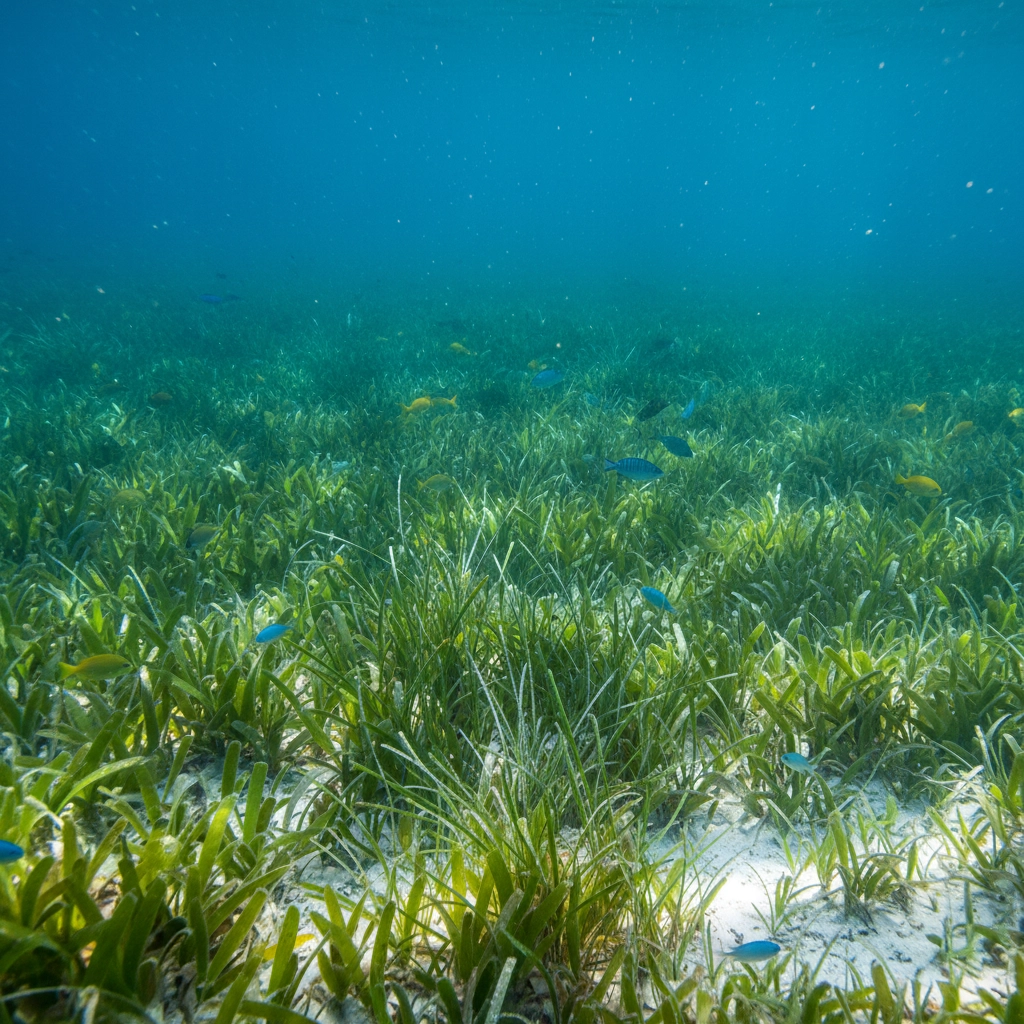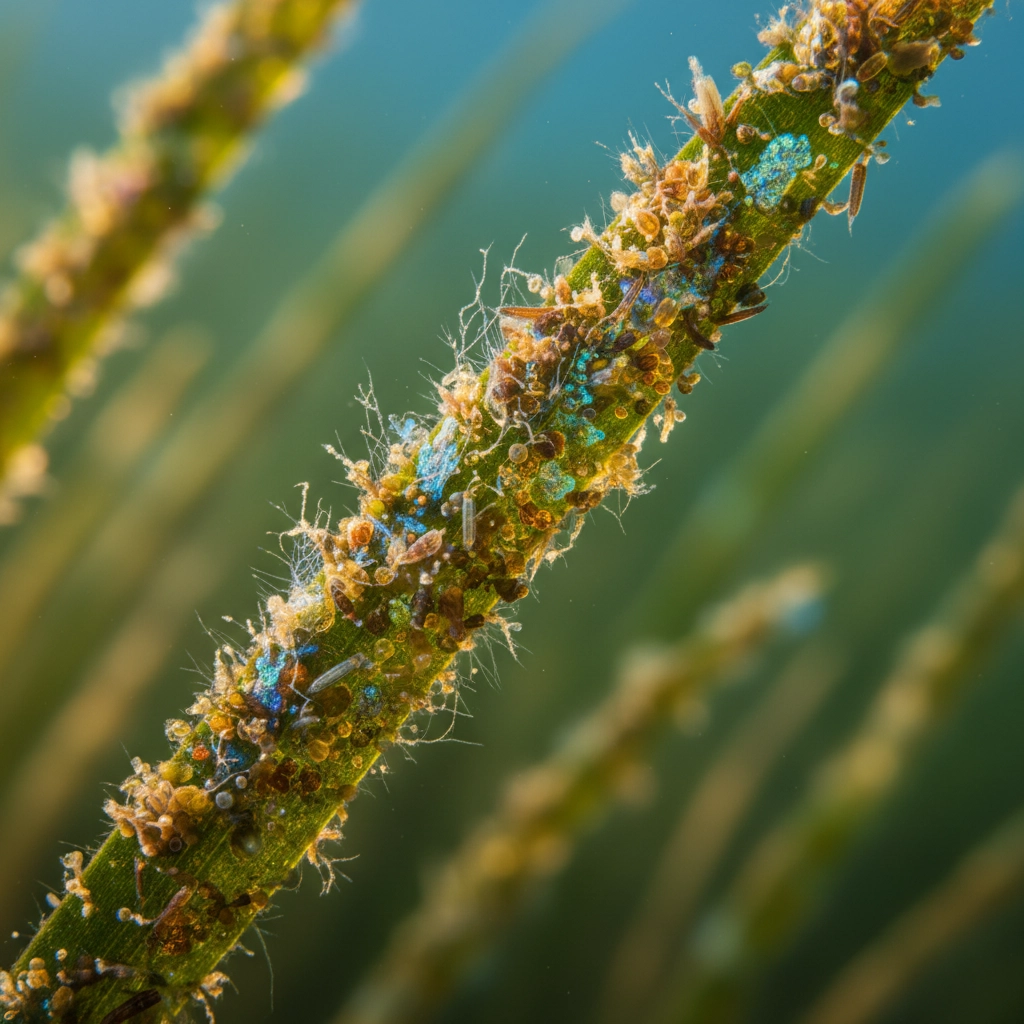Florida Keys Seagrass Science for Middle School: Fieldwork, Biodiversity, and Restoration
- Caleb Mullenix
- Oct 27
- 5 min read
Understanding marine ecosystems requires hands-on exploration, and the Florida Keys offers middle school students an unparalleled opportunity to study one of Earth's most productive underwater environments. The region's 1.5 million acres of seagrass meadows create a living laboratory where students can observe, measure, and participate in real marine science research while contributing to conservation efforts.
The Foundation of Florida Keys Marine Life
Seagrass meadows function as underwater prairies, transforming sandy ocean floors into thriving three-dimensional forests that support incredible biodiversity. These marine flowering plants create the structural complexity necessary for countless species to thrive, making them essential to the health of the entire Florida Keys ecosystem.
Three Key Seagrass Species
Middle school students will encounter three dominant seagrass species during their fieldwork:
Turtle grass (Thalassia testudinum): The most robust species with broad, flat blades
Manatee grass (Syringodium filiforme): Characterized by cylindrical, spaghetti-like leaves
Shoal grass (Halodule wrightii): The smallest species, often found in shallower waters
Each species serves different ecological functions and supports varying wildlife communities, providing students with excellent opportunities for comparative studies and data collection.

Geographic Variations for Student Research
Research demonstrates significant differences between Gulf-side and Ocean-side seagrass habitats. Gulf-side locations consistently exhibit greater biodiversity, higher population densities, and more complex structural characteristics. This geographic variation enables students to conduct meaningful comparative studies, investigating how environmental factors such as water depth, salinity, and wave action influence ecosystem development.
Remarkable Biodiversity in Action
Fish Communities: Living Identification Guides
Students participating in seagrass fieldwork will observe an extraordinary array of fish species. The most abundant species include:
White grunt (Haemulon plumierii): Easily recognized by their distinctive grunting sounds
Pinfish (Lagodon rhomboides): Named for their sharp dorsal spines
Fringed filefish (Monacanthus ciliatus): Masters of camouflage among seagrass blades
Various mojarra species: Small, silvery fish that school in large groups
These four species groups comprise nearly 70% of small-bodied fish populations in seagrass meadows, making fish identification activities both manageable and rewarding for middle school students.
Invertebrate Investigations
The invertebrate communities within seagrass meadows offer exceptional opportunities for hands-on discovery. Students can search for and catalog:
Crustaceans: Shrimp, crabs, copepods, isopods, and amphipods that find refuge among grass blades Mollusks: Queen conch, octopus, squid, snails, and bivalves that inhabit these productive meadows Echinoderms: Bahama sea stars and other species that demonstrate unique feeding strategies
A particularly engaging aspect of seagrass investigation involves examining individual grass blades under magnification to observe epiphytic organisms: bacteria, microalgae including diatoms, and various small invertebrates that grow directly on living seagrass leaves. This miniature ecosystem within an ecosystem provides excellent opportunities for microscopic investigation and meaningful discussions about symbiotic relationships.

Marine Megafauna Encounters
Larger marine animals depend heavily on Florida Keys seagrass meadows for feeding and habitat. Students may observe:
Manatees: Gentle giants that graze directly on seagrass vegetation
Green sea turtles: Ancient mariners that depend on healthy seagrass beds for survival
Wading birds: Including egrets and herons that forage in shallow seagrass areas
Rays and sharks: Predators that visit seagrass beds to hunt abundant prey
These encounters provide powerful connections between classroom learning and real-world conservation needs.
Hands-On Fieldwork Opportunities
Scientific Survey Techniques
Middle school students can master basic marine science survey methods through structured fieldwork activities. Essential techniques include:
Quadrat Sampling: Using standardized square frames to measure seagrass density and coverage Transect Surveys: Collecting data along predetermined lines to assess ecosystem health Fish Identification: Developing visual recognition skills for common seagrass species Water Quality Testing: Measuring temperature, salinity, dissolved oxygen, and turbidity
These fundamental research methods enable students to collect meaningful data while learning proper scientific procedures and data recording techniques.
Technology Integration
Modern seagrass research incorporates advanced technology that engages middle school students:
Underwater cameras: Documenting species interactions and habitat characteristics
GPS units: Recording precise survey locations for long-term monitoring
Water quality meters: Measuring environmental parameters that affect seagrass health
Data loggers: Collecting continuous information about underwater conditions

Seagrass Restoration Science
Critical Ecological Functions
Seagrass restoration carries enormous importance for Florida Keys marine ecosystems. These underwater meadows serve multiple critical functions:
Sediment Stabilization: Extensive root and rhizome systems trap sediment and nutrients that would otherwise harm coral reefs Carbon Sequestration: Seagrass beds function as significant carbon sinks, helping mitigate climate change impacts Ocean Chemistry Buffering: Research suggests seagrasses help protect coral reefs from ocean acidification Coastal Protection: Dense seagrass meadows reduce wave energy and prevent shoreline erosion
Restoration Effectiveness
Students learn that seagrass restoration achieves remarkable success rates when implemented properly. Some restoration projects demonstrate 80% recovery within five years through appropriate techniques and sustained community involvement. This success rate provides encouraging evidence that conservation efforts produce measurable positive outcomes.
Student Participation in Restoration
Middle school students can contribute meaningfully to seagrass restoration through carefully designed service-learning activities:
Seed Collection: Gathering viable seagrass seeds during reproductive seasons Nursery Preparation: Helping establish seagrass nurseries for restoration projects Monitoring Activities: Collecting data to track restoration progress over time Outreach Programs: Sharing restoration knowledge with community members

Youth-Led Environmental Stewardship
Innovative restoration programs engage students as active environmental stewards rather than passive observers. These initiatives bridge environmental restoration needs with STEM education requirements, providing authentic science experiences while restoring critical ecosystems. Students develop understanding that restoring seagrass meadows benefits interconnected coastal ecosystems including mangroves, coral reefs, and wetlands, boosting overall biodiversity and ecosystem resilience.
Curriculum Integration with Appleseed Expeditions
Comprehensive Learning Modules
Appleseed Expeditions designs seagrass science programs that align with middle school science standards while providing authentic research experiences. Students participate in multi-day investigations that combine:
Pre-Trip Preparation: Classroom sessions covering seagrass biology, identification guides, and survey techniques Field Research: Hands-on data collection in pristine seagrass meadows throughout the Florida Keys Data Analysis: Processing collected information to draw meaningful scientific conclusions Restoration Participation: Contributing to active conservation projects that make lasting positive impacts
Cross-Curricular Connections
Seagrass studies naturally integrate multiple academic subjects:
Mathematics: Statistical analysis of biodiversity data, calculating coverage percentages, and graphing population trends
English Language Arts: Scientific writing, research presentations, and conservation communication
Social Studies: Understanding human impacts on marine ecosystems and coastal community economics
Art: Scientific illustration, underwater photography, and habitat documentation

Long-Term Impact and Follow-Up
Appleseed Expeditions ensures that seagrass science experiences extend beyond the field trip itself. Students receive resources for continued learning, opportunities to share findings with their school communities, and connections to ongoing conservation organizations. This approach transforms a single educational experience into lasting environmental stewardship and potential career inspiration.
Assessment and Learning Outcomes
Measurable Learning Objectives
Students participating in Florida Keys seagrass science programs demonstrate measurable improvements in:
Scientific Knowledge: Understanding marine ecosystem functions, species interactions, and conservation principles Research Skills: Mastering data collection techniques, scientific observation, and hypothesis testing Environmental Awareness: Recognizing human impacts on marine ecosystems and conservation solutions Critical Thinking: Analyzing complex ecological relationships and evaluating restoration effectiveness
Real-World Applications
Seagrass science education provides students with practical knowledge applicable to current environmental challenges. Students learn how their actions impact marine ecosystems and develop skills necessary for addressing climate change, habitat destruction, and biodiversity loss. These experiences inspire many students to pursue marine science careers and maintain lifelong commitments to environmental conservation.
The Florida Keys seagrass science program through Appleseed Expeditions transforms abstract classroom concepts into tangible, meaningful experiences. Students return home with scientific skills, environmental awareness, and lasting connections to marine conservation efforts. This comprehensive approach ensures that seagrass science education produces both immediate learning outcomes and long-term positive impacts on student development and environmental stewardship.
By participating in authentic seagrass research and restoration activities, middle school students gain profound appreciation for marine ecosystem complexity while developing scientific skills that serve them throughout their academic careers. The Florida Keys provides an ideal setting for this transformative educational experience, combining natural beauty with rigorous scientific investigation and meaningful conservation action.



Comments